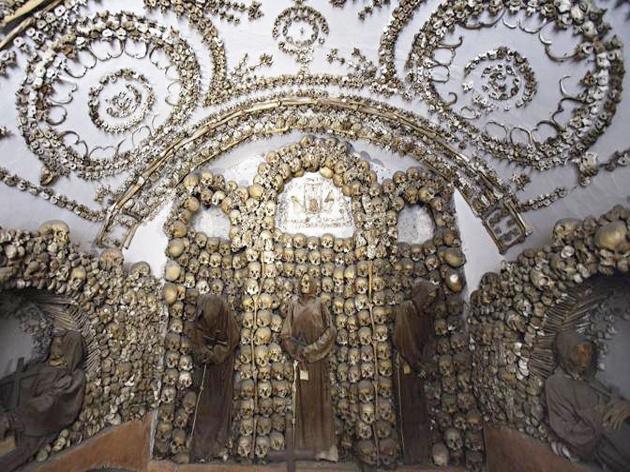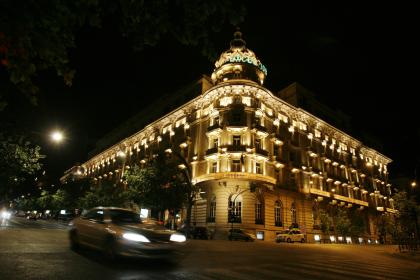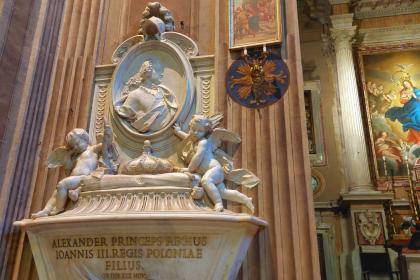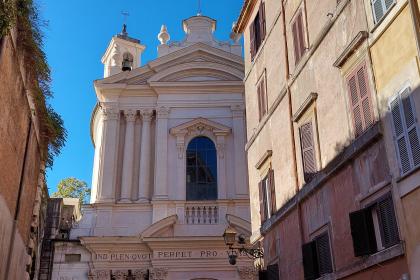
The museum attached to the Baroque church of Santa Maria della Concezione on Via Veneto, close to Piazza Barberini, collects and exhibits some significant aspects of the Capuchin friars in general and of Lazio in particular. The eight rooms of the exhibition itinerary show the simple lifestyle, closeness to the poor and spirit of fraternity that characterize the religious order, whose history is recounted from its origins in the 16th century to the present day.
The first section of the museum is dedicated to the convent, commissioned by the Barberini family and completed in 1631 according to the design of the Capuchin architect Fra Michele da Bergamo. The two following sections present the order and spirituality through the images and stories of some of the Capuchin saints, while the fourth section displays robes, objects of liturgical use and artifacts of daily use. The fifth section is dedicated to the painting depicting St. Francis in meditation, possibly made by Caravaggio specifically for the Capuchin friary. The sixth and seventh sections recount the spiritual, cultural, missionary and artistic activities of the order in the 20th century and around the world. At the end of the exhibition itinerary, the eighth section introduces the final and highly evocative place that closes the museum visit: the Crypt-Cemetery.
Built in the mid-18th century, the Crypt is a singular work of art with a macabre all-Baroque taste, an artistic and philosophical “memento mori” that has few other examples in the city – such as the crypt of the Church of Orazione e Morte on Via Giulia or the underground cemetery of the Confraternity of the Sacconi Rossi adjacent to the church of San Bartolomeo all’Isola. It consists of a long corridor with five chapels, decorated on the vaults and walls with the mortal remains of nearly 4,000 friars dating from between the 16th and the 19th centuries, composed in such a way as to form rosettes, pilasters, stars, hourglasses, clocks and butterflies, chandeliers and crosses. On the walls are piled thousands of shinbones, femurs and skulls turned into building materials to create niches and architectural structures that house skeletons dressed in the habit of some of the friars. Each chapel bears the name of the bones with which the decorations were made and contains, according to tradition, holy earth transported here from Palestine or Jerusalem.
Via Vittorio Veneto

 Condividi
Condividi
The Church of Santa Maria della Concezione of the Capuchins

 Condividi
Condividi
Piazza Barberini
 Condividi
Condividi
Church of Santa Maria dell'Orazione e Morte

 Condividi
Condividi
Information
For the opening times and guidelines please check the > official website
 Condividi
Condividi
Location
To find out about all accessibility services, visit the Rome accessible section.











































